You can put the finishing device on the door and use it as is, without any intervention in the factory settings. This approach is justified, since the risk of adjusting the settings is minimized.
However, it is still better to invite the master or do the adjustment of the door closer with your own hands. There is nothing complicated in the setup procedure, you just need to read the instructions and follow the manufacturer's instructions correctly.
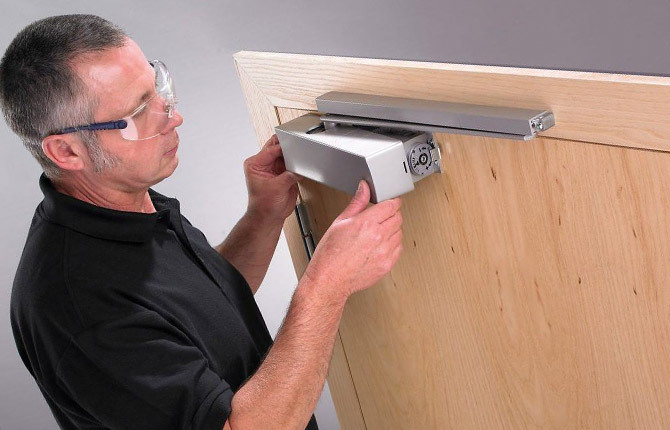
The content of the article:
-
Types of door closers
- With articulated arm
- slide
- When is adjustment needed?
-
Do-it-yourself door closer adjustment depending on the part of the structure
- Closing force adjustment
- How to loosen the door closer to open
- How to adjust the door closer so that the door does not slam
- Door tight adjustment
- Results
Types of door closers
The problem of closing the door leaf has existed since the appearance of the doors themselves. At various times, powerful springs, plumb lines on pulleys and with a suspended load, various kinds of rattles, and pneumatic shock absorbers were used to close the doors.
All of them were not very convenient to use and had an unattractive design. But most importantly, it was difficult, and often impossible, to regulate them so that door closer softly closed (slammed) the door without hitting the door frame.
Of the modern models for home and office doors, three main door closer schemes are used:
- Slide or with a "sliding" bar. According to the design, they can be built into the floor, on the upper crossbar of the door frame or in an overhead design.
- Articulated with lever or oil brake. They are almost always made in the form of an overhead housing driven by two levers connected by a hinge.
- Embedded in door hinges. Usually, the closer mechanism is mounted in the floor along with the door hinge-support. The closer is located inside the hinge, and the adjustment is performed when installing the door leaf.
The latter scheme is mainly used for frameless glass doors. Adjusting such a closer requires special skills and knowledge of the features of the spring. Therefore, if you plan to install such a device in your home, it is better to use the services of a master. In other cases, self-adjustment of the door closer is quite possible.
With articulated arm
Structurally, the closer looks like a body with a swivel rod, on which a pair of levers connected by a hinge is put on. The device is mounted on the chute or on the door, the hinge on the second lever is attached to the bracket installed respectively on the door leaf or chute. After installing the closer, the second lever should be perpendicular to the plane of the door leaf.
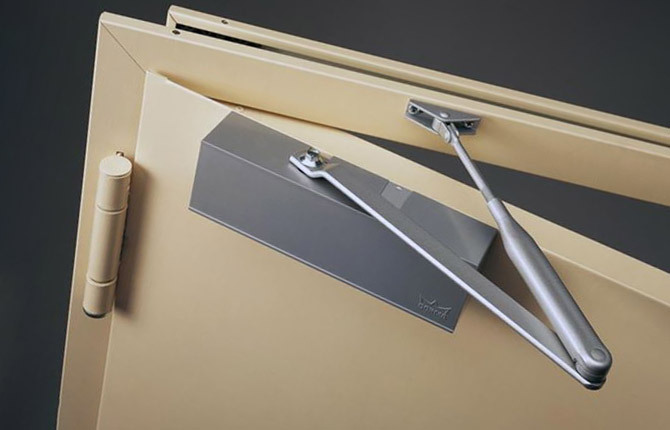
The price of devices for finishing doors for different models can range from 2 thousand rubles. rub. up to 12-15 thousand rub. Outwardly, they are very similar: a body, a pair of levers, a bracket. The difference between expensive and budget models, as a rule, lies in the quality of parts and the ability to precisely adjust the speed of closing the door leaf.
For inexpensive models, the mechanism is adjusted several times a year. In better finishing devices, the system is adjusted once, usually before the onset of seasonal winds.
Important! In inexpensive models of closers for external doors of the E6-E7 class, there may be no adjustment screws.
In such designs, the average value of the closing speed is set. The greater the weight of the front door, the more difficult it is to accurately adjust the speed of the leaf movement. Therefore, often the adjustment comes down to choosing the length of the lever.
slide
The main difference between closers with a sliding rod is that the lever of the device is not rigidly fixed with a hinge on the bracket, but slides along the guide in the process of closing and opening the door.
Structurally, such closers provide a constant force when opening and closing the door. Moreover, in some models there is an eccentric for additional pressing the door to snap onto the ball of the door lock.
Subjectively, many users note that the slide system provides a higher level of comfort. When opening, the counterpressure load on the hand remains practically at the same level and does not depend on the opening angle of the door leaf, except for the slam zone. But there are also disadvantages: if the slide closer is on the front door, then before proceeding with the adjustment, you need to blow and clean the gutter.
Healthy: Do-it-yourself door closer installation.
When is adjustment needed?
It is not surprising if the owners of apartments do not adjust the stroke when installing a new closer. The device is new, when checking at the factory, it is necessary to carry out adjustment according to the standard class. If the closer is marked E3-E5, then the adjustment will be performed at a higher load.
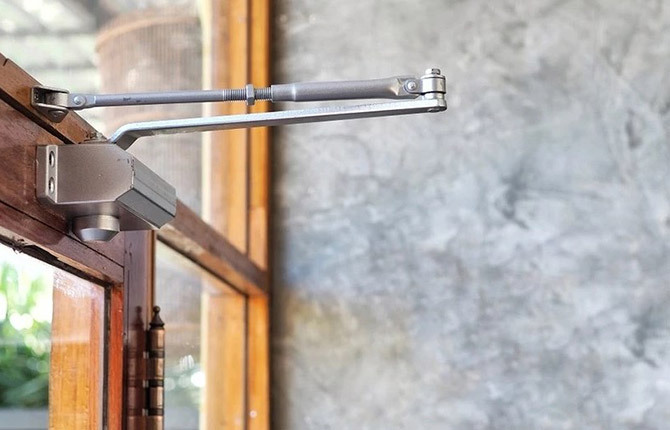
But most owners prefer to adjust the door closer with their own hands. This is done if:
- The door is in the office, and during the working day a large number of visitors pass through the doorway. If this is not done, then the hinges holding the door leaf, or the ball retainer, will quickly become unusable.
- In the event that the closer is installed on the front door. It is important to adjust the web pressing force. Otherwise, gusts of wind will constantly open the sash, respectively, precious heat is lost.
Often the adjustment is made according to a non-standard scheme. For example, the owners of cafes or small shops deliberately reduce the force of opening and closing the door, and adjusting the latching is done very slowly, but with a tight pressing of the sash to the door frame.
A large number of visitors (customers) enter and leave through the door, and the closer must work quickly and easily. If you make a big effort, then visitors are likely to tear off the handle on the door due to the habit of accompanying the door with their hand.
Do-it-yourself door closer adjustment depending on the part of the structure
A conventional damper mechanism is installed inside the case, it slows down the movement of the door under the action of a spring. Adjustment is carried out according to three criteria:
- the force of pressing (opening) the door leaf to the frame;
- leaf movement speed at the free stage;
- hitting speed.
This is a standard set of adjustment points, it is present on almost all door closer models. In more expensive devices, additional adjustment points can be installed, with which you can adjust the force when opening the doors or adjust the angle at which the door leaf will automatically lock into place position.
Closing force adjustment
At the end of the closer housing or under the sliding decorative cover, you can find two adjusting screws. The upper adjustment point is used to adjust the slam speed, the lower one is used to adjust the process of closing the door leaf in the range from 180O up to 15O.
To adjust, you just need to turn the second screw ¼ turn clockwise. As a result of adjusting the closer, the door will close more slowly.
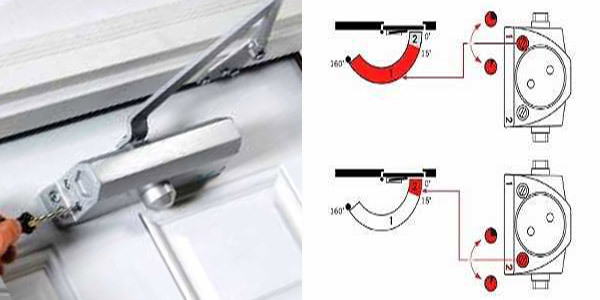
How to loosen the door closer to open
It is clear that opening the door leaf in the absence of resistance is much more convenient than overcoming the force created by the door closer. In simple devices like NORA-M, they simply reduce the slamming force by turning the adjustment screw a little more than the middle position.
It turns out that it becomes more convenient to leave through the doorway, but there is a risk that the door will slowly close. For metal-plastic door panels, this is not a problem, you just need to add a slam force.
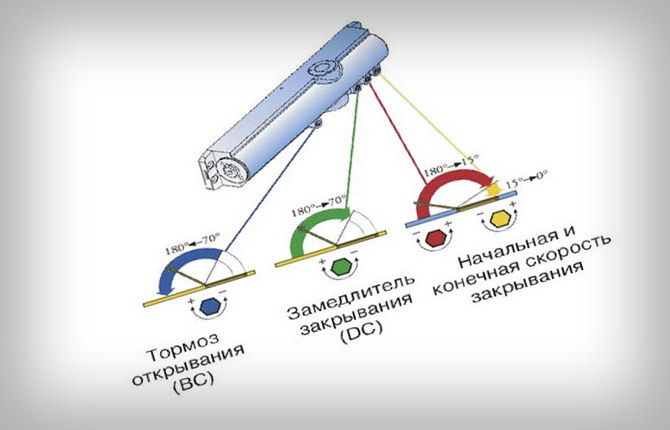
But there is a more rational solution. For example, instead of NORA-M, put a German door closer with additional functions or adjustment points. In this case, instead of two screws, there will be four heads on the case. Usually these are expensive models with a built-in hydraulic fluid bypass valve and a door leaf lock in the open position.
For different manufacturing companies, the purpose of the screws may differ. Therefore, before you start self-adjusting the door closer, you must definitely look at their purpose. Moreover, it will be useful to make for yourself step-by-step adjustment instructions in several points, which you should save in your smartphone or in the box from under the door closer.
Further, according to the scheme, you need to find the screw with the designation BC (closing brake), wrap it completely and unscrew it a quarter of a turn. With each new adjustment cycle, you have to turn it ¼ turn counterclockwise, gradually reducing the brake force when opening the door leaf.
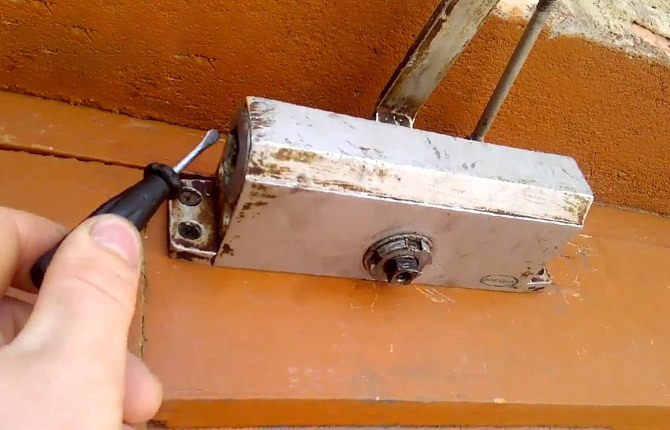
How to adjust the door closer so that the door does not slam
Even if the device is working normally and the door does not hit the box, but closes smoothly, it will still need to be adjusted in a year and a half. This is a way to compensate for the wear of the main parts and mechanisms of the brake.
In order for the swoop to turn out smoothly, it is necessary to adjust the closing speed of the sash in the last 20 cm of the path. For these purposes, a screw valve No. 1 is provided on the closer body.
The essence of the adjustment is that by turning the screw inward (clockwise), we block the cross section of the oil flow. The pressure of the hydraulic fluid drops more slowly, respectively, the door will close without popping.
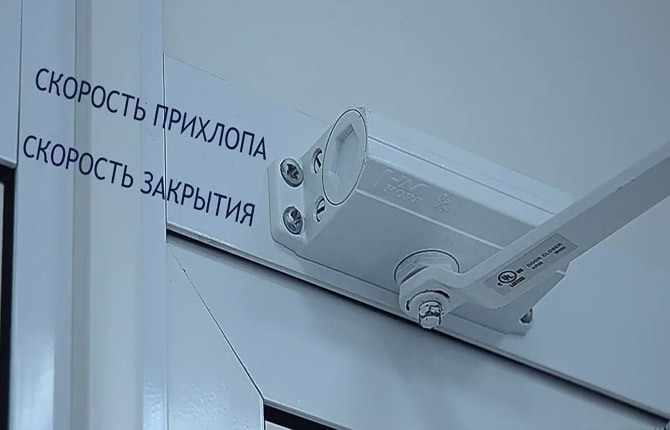
You can immediately tighten the screw until it stops and turn it back half a turn. This is a standard adjustment technique that is used on all door closers. If the catch is too weak, then you will need to tighten the slot 1/4 or 1/8 turn with a screwdriver, remembering to check the operation of the door closer after each new adjustment.
To avoid confusion when adjusting:
- in order to make the door leaf move harder and faster, you need to unscrew the screw counterclockwise;
- to enhance the braking effect, the adjusting screw is turned clockwise.
Important! Correctly according to the instructions, the adjustment must begin precisely by tightening the screw until it stops.
Do not try to unscrew the screw from the closer a few turns (completely loosen the resistance) and only then screw it back in. It is not right. Firstly, it will be much more difficult to adjust in this way, and secondly, there is a risk of unscrewing the screw too much, as a result, hydraulic fluid will flow.
Loss of oil usually results in a spring-loaded effect on the door leaf, causing the seal on the stem to wear much faster.
Door tight adjustment
The degree of pressing the door leaf is selected when installing the door closer. If the installation and preliminary adjustment of the door closer are carried out according to the instructions, the second (adjustable) lever of the articulated pair must be at an angle of 90O. In reality, it is usually deviated from the perpendicular by a small angle to the left or right. This is due to the fact that the mounting plane of the bracket and the surface of the door leaf do not match by 1-3 cm.
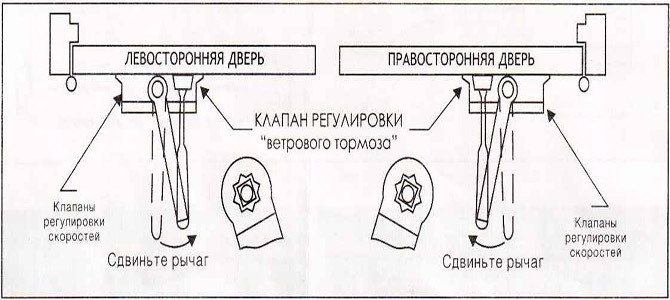
As a result, the door may not fit snugly or, conversely, the closer lever does not reach its end position. Both options require intervention and adjustment.
In order to increase the pressing force, you need:
- disassemble the hinge on the bracket;
- disconnect the threaded lever and screw the stem a few turns inwards so that the total length decreases by 3-5 mm;
- assemble the mechanism in reverse order.
If you choose the right length of the adjustable lever, the door will close tightly. But it is also impossible to shorten the stem too much, as this negatively affects the operation of the device spring. It is clear that you will have to open the door with a little more effort than usual.
Results
Do-it-yourself door closer adjustment does not require complex tools or special knowledge. All that is needed is to carefully read the instructions for the door closer. Naturally, the screws are not adapted for daily adjustment. Usually you need to adjust the device a maximum of a couple of times a year. If you have to do this every month, then perhaps the device needs to be replaced or overhauled.
Tell us about your experience with door closers. Have you had experience adjusting them yourself? Bookmark the article and share it on social networks so that you and your friends can use our instructions at any time.


